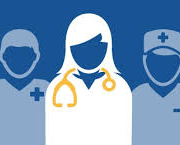The following is the latest COVID-19 information from the federal government as of 2:30 p.m. on Thursday, October 22.
Provider Relief Fund
HHS has announced that it is updating its most recent Provider Relief Fund reporting instructions to broaden how past fund recipients may use those funds. See that announcement here. In September HHS announced changes in instructions that had originally been issued in June, but with this announcement it appears the agency is restoring its June instructions. In making this decision, HHS wrote that
As providers, provider organizations, and members of Congress familiarized themselves with the reporting requirements, HHS received feedback from many voicing concerns regarding this approach to permissible uses of PRF [Provider Relief Fund] money. In response to concerns raised, HHS is amending the reporting instructions to increase flexibility around how providers can apply PRF money toward lost revenues attributable to coronavirus.
Go here for HHS’s policy memorandum on its reporting requirements decision and go here to see the amended reporting requirements.
- HHS also has announced that it has expanded eligibility for the upcoming Phase 3 general distribution to include a variety of provider types that have not previously received any Provider Relief Fund distributions. See HHS’s announcement of this change in the Phase 3 distribution for a list of the provider types that are now eligible to apply for Provider Relief Funds.
- Please feel free to contact NASH if you would like further information about these important announcements.
Department of Health and Human Services
- HHS has issued guidance authorizing qualified pharmacy technicians and state-authorized pharmacy interns to administer childhood vaccines, COVID-19 vaccines when made available, and COVID-19 tests, all subject to several requirements. Learn more from HHS’s announcement of this new policy and from its guidance on the new authorization.
- HHS’s Office of the Inspector General has issued an alert to the public about fraud schemes related to COVID-19, including drawing blood and billing Medicare for medically unnecessary services and extracting personal information from Medicare beneficiaries.
Centers for Medicare & Medicaid Services
CMS is offering a series of scenario-based training programs for front-line nursing home management and staff to prepare nursing homes to protect, provide care, and prevent the spread of COVID-19 in the fall and winter. Go here for further information.
- CMS has updated its letter to nursing home residents and their families about nursing home residents’ right to vote and the federal requirement that nursing homes take steps to ensure that their residents can vote.
Centers for Disease Control and Prevention
- The CDC has updated its definition of what constitutes “close contact” for contract tracing purposes. It now defines “close contact” as “Someone who was within 6 feet of an infected person for a cumulative total of 15 minutes or more over a 24-hour period starting from 2 days before illness onset (or, for asymptomatic patients, 2 days prior to test specimen collection) until the time the patient is isolated.” See the updated guidance here, including a more detailed explanation of what constitutes “close contact.”
Food and Drug Administration
- The FDA has issued emergency use authorization for a commercial product to be used to decontaminate compatible N95 respirators for single-user reuse by health care personnel when there are insufficient supplies of face-filtering respirators.

 HHS has announced that it is updating its most recent Provider Relief Fund reporting instructions to broaden how past fund recipients may use those funds. See that announcement
HHS has announced that it is updating its most recent Provider Relief Fund reporting instructions to broaden how past fund recipients may use those funds. See that announcement  CMS is offering a series of scenario-based training programs for front-line nursing home management and staff to prepare nursing homes to protect, provide care, and prevent the spread of COVID-19 in the fall and winter. Go
CMS is offering a series of scenario-based training programs for front-line nursing home management and staff to prepare nursing homes to protect, provide care, and prevent the spread of COVID-19 in the fall and winter. Go 